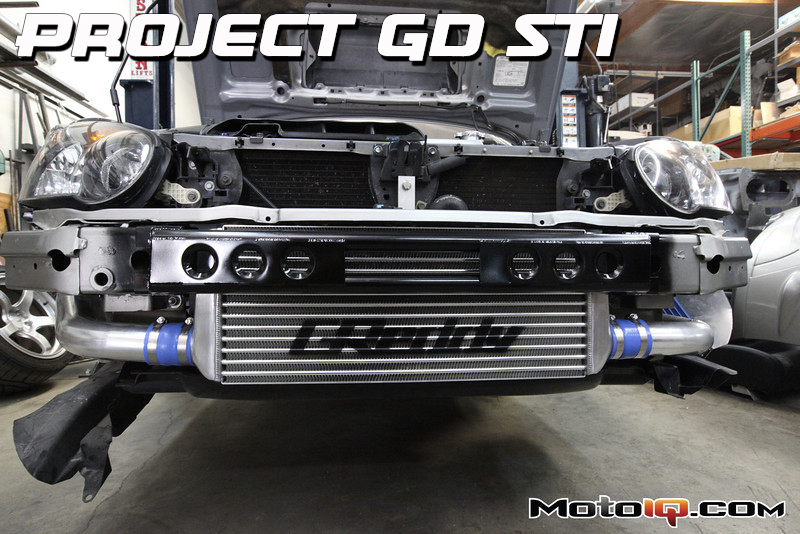,
 |
| We replaced the stock hoses with these high temperature silicone hoses by HPS. Silicone resists deterioration and the HPS hoses are 4 plys thick, stronger than your typical 2 ply hose. The HPS hoses are molded to shape for direct OEM replacement and come with heavy duty hose clamps. These hoses could possibly last the life of your car! |
 |
| You can see the thickness difference between the 36mm Koyo core and the 25mm thick stock core. Most heat exchange takes place in the first 1.5″ or 37mm of any heat exchanger so this happens to be a good thickness! |
 |
| Here you can see the Koyo's all TIG welded and furnace brazed one piece construction vs. the stock radiator's crimped on plastic end tanks. The Koyo radiator has all the bolt bosses and pegs for a complete direct OEM fitment and has an aluminum drain plug vs the stock plastic part. All of these features make the Koyo radiator able to safely run at higher pressures and have much less leak potential. |
 |
| To fit the front mount intercooler we first had to cut off a couple of the mounting tabs for the belly pan to make room for the intercooler core. Technosquare's Howard Watanabe shows how it's done here! |
 |
| The intercooler core is held on by a bracket that bolts to the hood latch. You can see how the core has a large frontal area but a thin profile. This is usually more efficient than the short and thick heat exchanger. |
 |
| One of the disadvantages of the boxer engine is that the intercooler pipes are long and complicated. We had to fiddle with the tube location and couplers to fit but it all went in OK. In some areas the fit is pretty tight but the overall tube layout from Greddy is clean. |




3 comments
Do you have any other picture for where the cooler mounts. Im trying to install the same kit on a 2004 sti and have trouble figuring out where the lower bracket goes.
Thanks
We did this a long time ago but I think it bolted to the inner fender apron.
We did this a long time ago but I think it bolted to the inner fender apron.